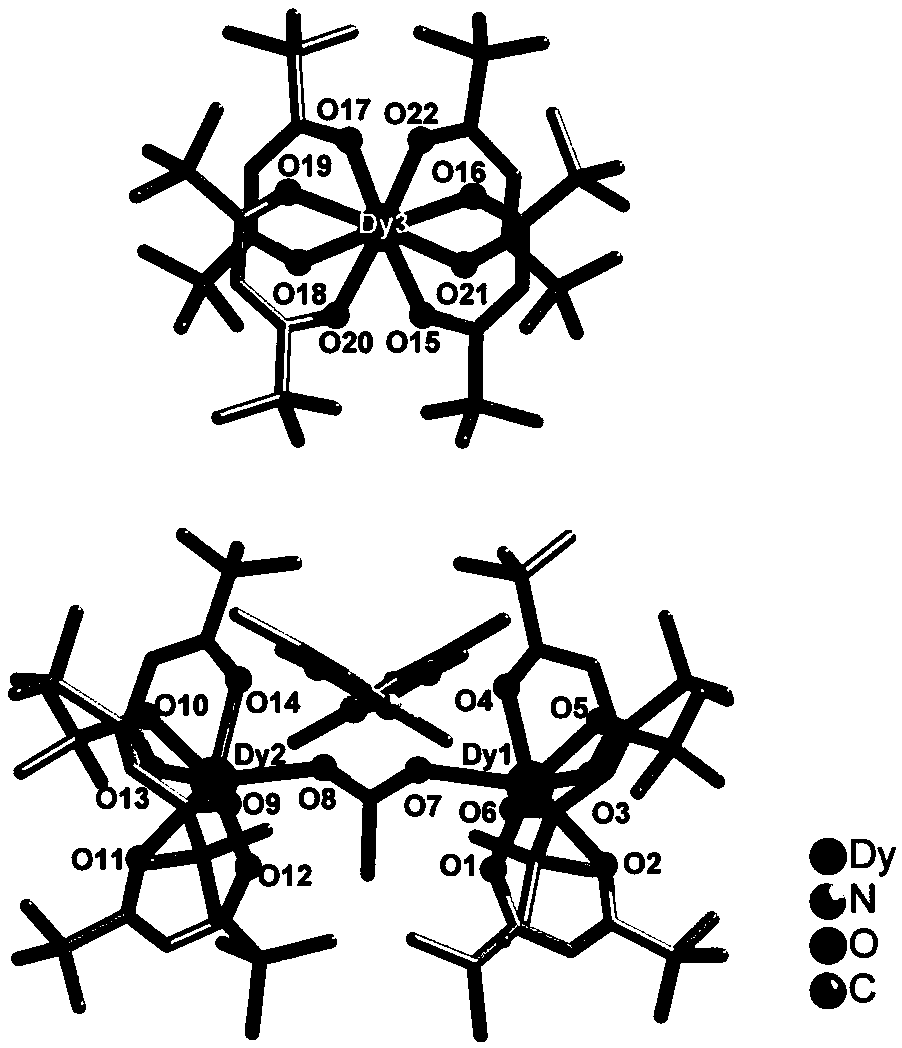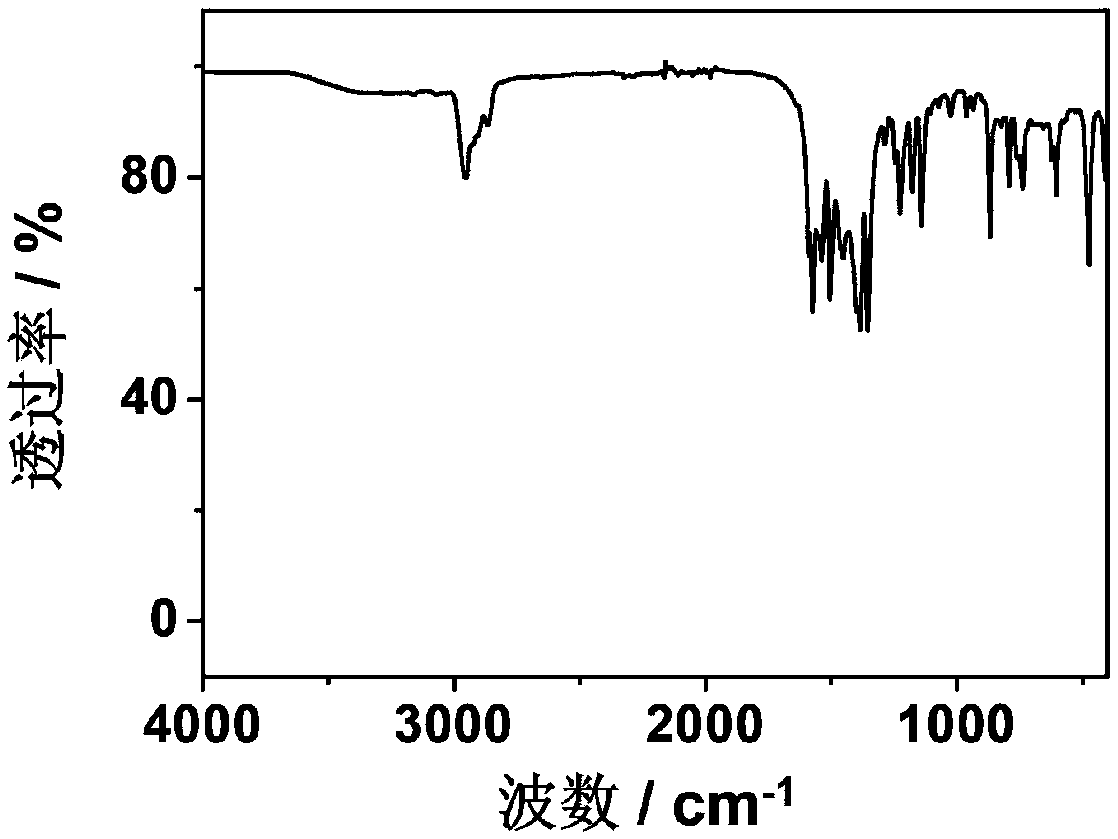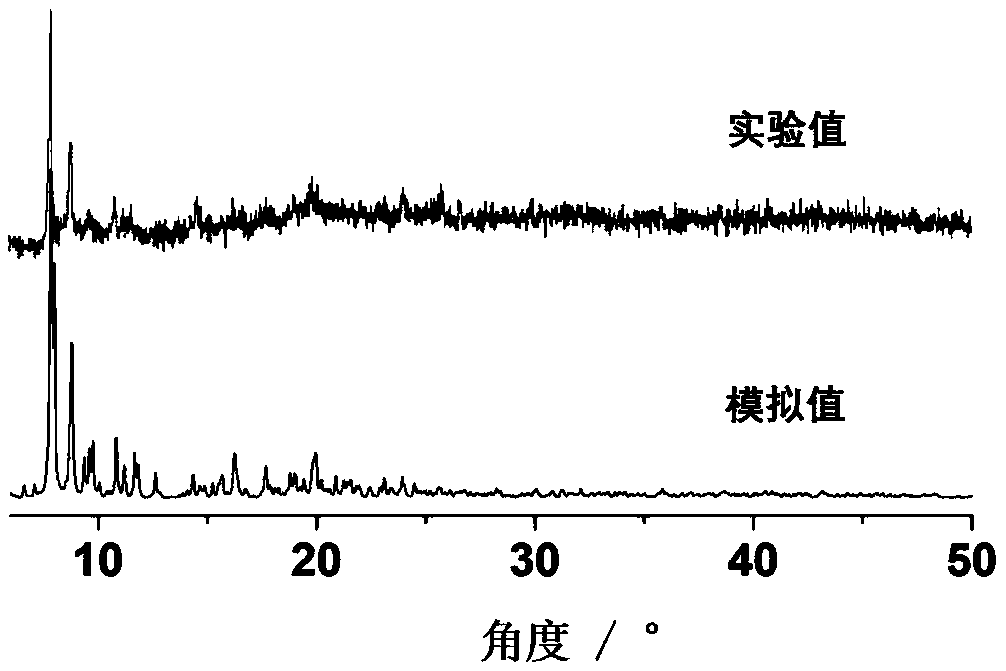Mononuclear-binuclear eutectic rare earth magnetic complex and preparation method thereof
A complex and magnetic technology, which is applied in the field of single and double-nuclear eutectic rare earth complexes and their preparation, can solve problems such as coordination environment sensitivity, and achieve high purity, simple and easy preparation methods, and good controllability
- Summary
- Abstract
- Description
- Claims
- Application Information
AI Technical Summary
Problems solved by technology
Method used
Image
Examples
Embodiment 1
[0038] A kind of mononuclear eutectic magnetic complex {[Tb(thd) 4 ][Tb 2 (thd) 6 (CH 3 COO)][Tmim] 2} The preparation method is specifically prepared according to the following steps:
[0039] 1. The 148.9 mg Tb(thd) 3 2H 2 O and 50.4 mg of TmimI were dissolved in 10 ml of n-pentane and stirred at room temperature for 10 minutes.
[0040] 2. Dissolve 3 mg of glacial acetic acid in 5 ml of n-pentane, slowly add it dropwise into the solution obtained in step 1, and stir and react for 10 minutes at room temperature.
[0041] 3. The reaction solution obtained in step 2 was stirred and reacted at 30°C for 60 minutes.
[0042] 4. Filter the reaction solution obtained in step 3, and slowly volatilize the filtrate at room temperature to obtain the colorless transparent rod-shaped crystals of the mononuclear eutectic magnetic complex.
[0043] The yield of the magnetic complex prepared in this example was 41.2%.
Embodiment 2
[0045] A kind of mononuclear eutectic magnetic complex of the present embodiment {[Dy(thd) 4 ][Dy 2 (thd) 6 (CH 3 COO)][Tmim] 2} The preparation method is specifically prepared according to the following steps:
[0046] 1. Add 224.7 mg Dy(thd) 3 2H 2 O and 50.4 mg of TmimI were dissolved in 10 ml of n-pentane and stirred at room temperature for 10 minutes to obtain a mixed solution.
[0047] 2. Dissolve 3 mg of glacial acetic acid in 5 ml of n-pentane, and slowly add it dropwise into the mixed solution obtained in step 1, and stir and react for 10 minutes at room temperature.
[0048] 3. The reaction solution obtained in step 2 was continuously stirred and reacted at 50° C. for 120 minutes.
[0049] 4. Filter the reaction solution obtained in step 3, and slowly volatilize the filtrate at room temperature to obtain the colorless transparent rod-shaped crystals of the mononuclear eutectic magnetic complex.
[0050] The yield of the magnetic complex prepared in this examp...
PUM
 Login to View More
Login to View More Abstract
Description
Claims
Application Information
 Login to View More
Login to View More - R&D
- Intellectual Property
- Life Sciences
- Materials
- Tech Scout
- Unparalleled Data Quality
- Higher Quality Content
- 60% Fewer Hallucinations
Browse by: Latest US Patents, China's latest patents, Technical Efficacy Thesaurus, Application Domain, Technology Topic, Popular Technical Reports.
© 2025 PatSnap. All rights reserved.Legal|Privacy policy|Modern Slavery Act Transparency Statement|Sitemap|About US| Contact US: help@patsnap.com



